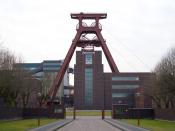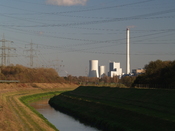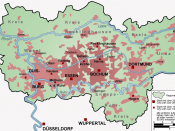ContentIntroduction2Visited locations2Deindustrialisation6The Ruhr - Location and boundaries6The process of de-industrialization7Restructuration8Process of reindustrialization9Residential locations and quality of life9From industrial structure to industrial culture10Ecology: Cultural and recreational landscapes10Example: Landschaftspark Nord12New sector: Tourism13New sector: Medicine14Sector: Energy15Universities15Conclusion15References15IntroductionThe paper is based on a field trip to the Ruhr area, which was undertaken on the occasion of the Regional Planning course. The Ruhr area demonstrates an old industrialized space (deindustrialisation), which became a region, characterized by the early phase of industrialization by industries such as coal, steel and textiles, and which resides since the 1990s in a profound transformation phase due to the crises of these industries. The analysis of the Ruhr area shows how an area develops to a region due to certain economic activities and the alteration of the region, because several branches of the economy loose and others begin to rise up.
During the field trip we visited eight different locations of the Ruhr area, where everyone of our group presented information about the place.
In the present paper are first these locations briefly described followed by the description of the de-industrialization and restructuring of the region. In this coherency, the visited locations are used as examples for the restructuring of the Ruhr area.
Map 1: Ruhr RegionSource: http://www.medienwerkstatt-online.de/lws_wissen/bilder/5835-1.gifVisited locationsThe first location is the Baldeneysee, which is by far the largest of the six Ruhr dams. It is located in the southern city of Essen. Operator of the dam is Baldeneysee Ruhrverband. A retaining dam was built between 1931 and 1933 in the city of Essen. The Baldeneysee was built as a settling tank for suspended particles. That is how the Ruhr could clean itself in a natural manner by sedimentation and degradation of contaminants by microorganisms through this widening of the Baldeneysee and the resultant reduced flow velocity. At...


